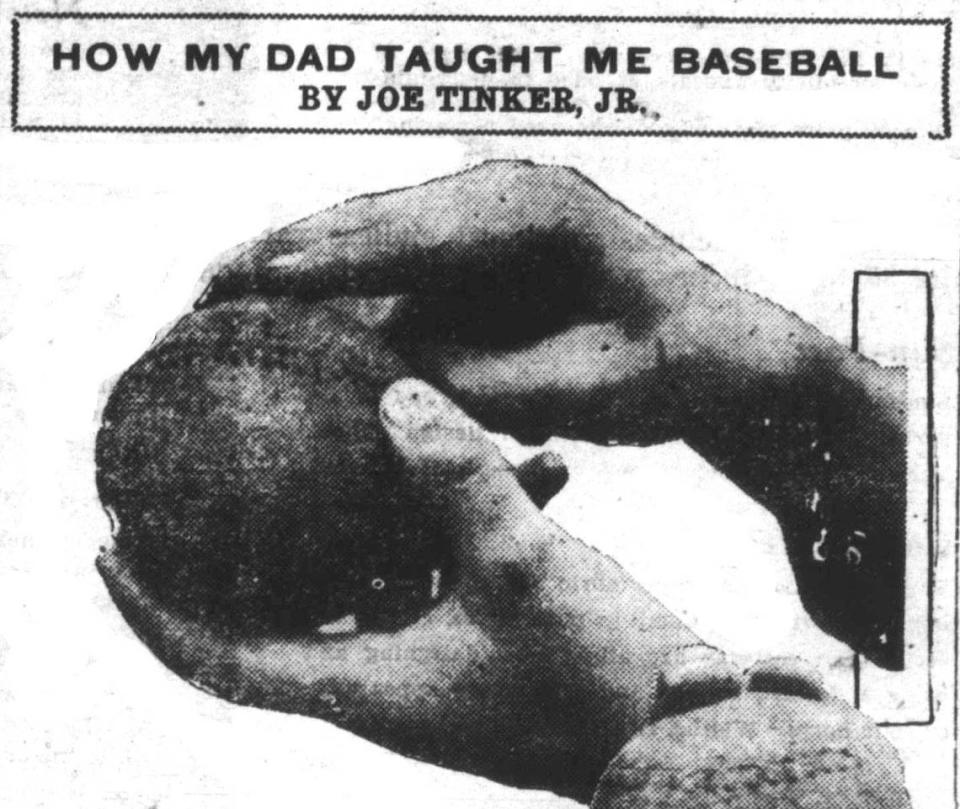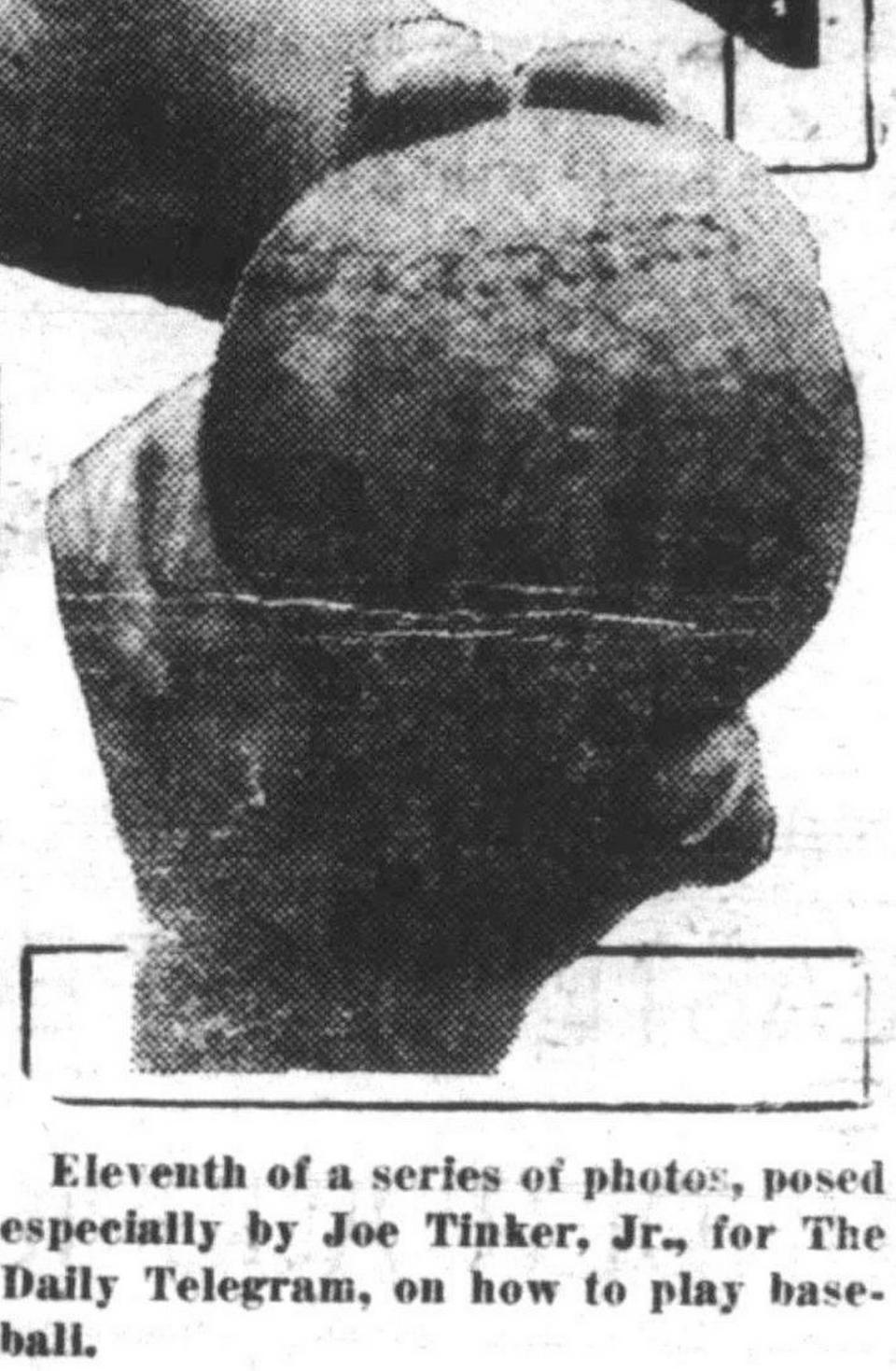How do you pitch a spitball? Son of Baseball Hall of Fame inductee offers tips
- Oops!Something went wrong.Please try again later.
- Oops!Something went wrong.Please try again later.
Joe Tinker was an early 20th century baseball star who played with the Chicago Cubs.
One statistic, wins-over-replacement, ranks the pro shortstop’s defense fifth all time, behind Ozzie Smith, Mark Belanger, Brooks Robinson and Cal Ripken Jr.
Tinker was inducted into the Baseball Hall of Fame in 1946.
Before that, however, he was immortalized in a 1910 poem by Franklin Pierce Adams.
The shortstop had helped kill a rally the previous day by the Giants turning a 6-4-3 double play.
This poem, titled “Baseball’s Sad Lexicon,” was published in the New York Evening Mail on July 12, 1910.
These are the saddest of possible words:
“Tinker to Evers to Chance.”
Trio of bear cubs, and fleeter than birds,
Tinker and Evers and Chance.
Ruthlessly pricking our gonfalon bubble,
Making a Giant hit into a double
Words that are heavy with nothing but trouble:
“Tinker to Evers to Chance.”
Apparently, Tinker and second baseman Johnny Evers were not close. A feud led to years of silence between the two.
By 1916, Tinker was famous enough that a national syndicated feature writer came up with several columns ostensibly based on first-person accounts of the son of the shortstop.
Back when Tinker played, altering the baseball was still allowed. Foreign substances and sandpaper were all used to affect the flight of the baseball.
The spitball was banned by Major League Baseball in 1920, but the drive to find an advantage and modern data analysis led to a recent development.
Pitchers began using Spider Tack in an attempt to get more grip and spin on the baseball. Now the MLB has cracked down on the use of that resin-based substance, and pitchers’ hands are inspected by umpires as they come off the field.
If you are interested in how to throw the spitball, take a look at this April 24, 1916, article from the Daily Telegram:

How my dad taught me Baseball by Joe Tinker, Jr.
THE SPITBALL.
How do you pitch the spitball? I remember asking my dad to explain this delivery the first time I saw Ed Walsh on the slab. It is probably the most deceptive ball a batter ever struck at, and is thrown at medium speed.
To throw the spitball wet the first and second fingers so it will slip, instead of roll easy. With the latter movement the curve is sharp, but with the former It is sudden. It is hard to control and the beginner usually makes a lot of wild heaves and is apt to be discouraged.
Always remember one thing; in ordinary and curve pitching the ball leaves the thumb first and the finger last. With the spitball this is reversed. The thumb. Instead of the fingers, controls the ball. The wetting of the fingers is only to allow the ball to slip away easily.

Moisten the plain surface on top of the ball (Top Fig.). You must get a lot of speed on this one. Use the overhand delivery, the first and second fingers covering plain surface. Keep the other fingers away from the seams. (Bottom Fig.)
Unlike the ordinary curved ball the pitcher cannot be certain of the side direction the ball will take as it breaks downward. The perfect “spitter” drops from a batter’s hip to his knees or below in perhaps two feet of forward motion and the side breaks are determined by the manner in which the ball leaves the pitcher’s hand.

